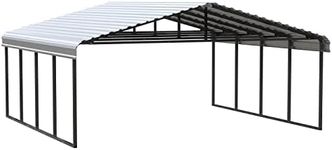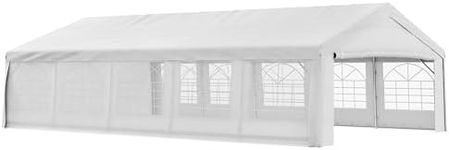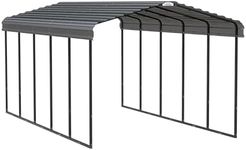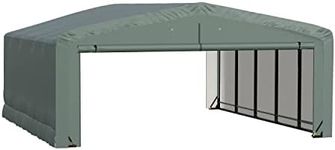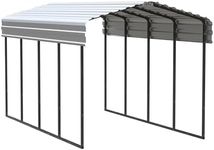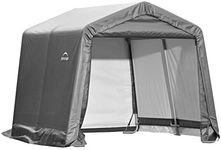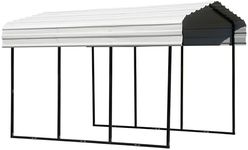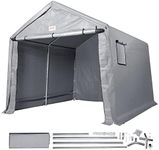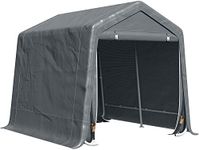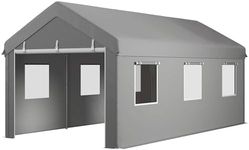Buying Guide for the Best Portable Garages
Choosing a portable garage is all about finding the right balance between protection, size, and convenience for your vehicles or belongings. Portable garages are great for shielding cars, boats, equipment, or even serving as temporary workspaces. To make the best choice, think about what you need to store, where you’ll set it up, and how often you might need to move or reassemble it. Understanding the key features will help you pick a garage that fits your needs and stands up to the elements.Size and DimensionsSize and dimensions refer to the length, width, and height of the portable garage. This is important because it determines what you can store inside and how much space it will take up in your yard or driveway. Portable garages come in a range of sizes, from small units for motorcycles or lawn equipment to large shelters for trucks or multiple vehicles. When choosing, measure the items you want to store and add extra space for easy access and movement. If you plan to use the garage for more than just storage, like a workspace, consider a larger size.
Frame MaterialThe frame material is what gives the garage its structure and strength. Most portable garages use steel or aluminum frames. Steel frames are heavier and generally more durable, making them better for long-term or heavy-duty use, especially in areas with strong winds or heavy snow. Aluminum frames are lighter and easier to move but may not be as sturdy. If you need to move the garage often or set it up temporarily, a lighter frame might be best. For permanent or harsh weather use, go for a stronger frame.
Cover MaterialCover material is the fabric or material that forms the roof and walls of the garage. Common options include polyethylene and PVC. Polyethylene is lightweight, water-resistant, and good for general use, while PVC is thicker, more durable, and offers better protection against UV rays and harsh weather. If you live in a sunny or storm-prone area, a heavier-duty cover is a smart choice. For occasional or seasonal use, a lighter cover may be sufficient.
Anchoring SystemThe anchoring system keeps the portable garage stable and secure to the ground. This is crucial for safety, especially in windy conditions. Some garages use simple stakes, while others have more advanced systems like auger anchors or weighted bases. If you’re setting up on soft ground like grass or dirt, look for strong anchors that go deep into the soil. For hard surfaces like concrete, you may need weighted anchors or special kits. Always match the anchoring system to your setup location and local weather.
Assembly and PortabilityAssembly and portability refer to how easy it is to set up, take down, and move the garage. Some models are designed for quick assembly with minimal tools, while others are more complex and may require several people. If you plan to move the garage frequently or use it for events, look for a model that’s lightweight and easy to assemble. For more permanent setups, a sturdier, more complex structure may be worth the extra effort.
Ventilation and AccessVentilation and access features include doors, windows, and vents that help with airflow and make it easier to get in and out. Good ventilation prevents moisture buildup and keeps the inside cooler, which is important if you’re storing vehicles or equipment. Some garages have roll-up doors, zippered panels, or mesh windows. Think about how you’ll use the space and choose a design that makes access and airflow convenient for your needs.
